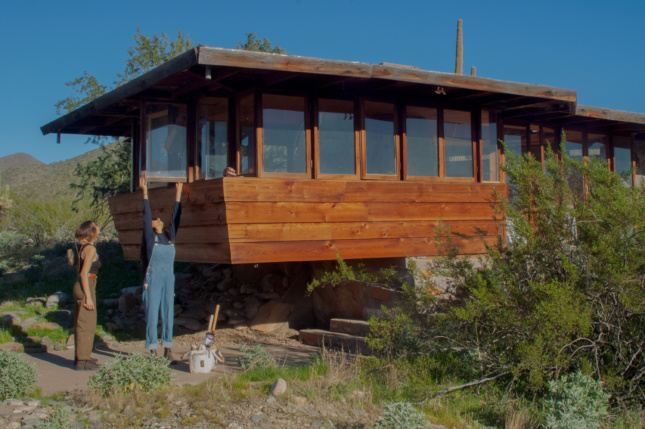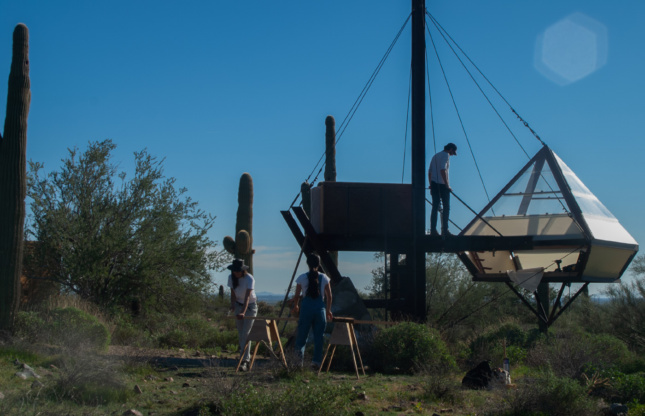In this final letter to the editor in the series, the students of the School of Architecture at Taliesin weigh in on the institution’s closure.
“It is not enough to leave behind you monuments of buildings, you owe it to future generations to leave monuments of human beings” – Olgivanna Lloyd Wright
The imminent closure of the School of Architecture at Taliesin has left its student body stunned and deeply distraught. To discontinue 88 years of an alternative pedagogical model is at least as destructive as the demolition of a physical architectural masterwork. To close this school is to dismantle one of the great visions and traditions of the past century; and to preserve the culture that sustains a built environment such as Frank Lloyd Wright’s Taliesin is equivalent in importance to any material evidence of history. A building is merely a shell if void of those who keep its legacy alive.

Beyond losing our school we are losing our home, our deeply interwoven community, and the chance to pursue our education at a truly unique, experimental institution: A platform designed to express pedagogy as a way of life. As graduate students in the year 2020, we have been incredibly fortunate to experience an education that transcends the classroom. At the School of Architecture at Taliesin, we live in shelters in the Sonoran Desert built by our colleagues and predecessors. We wake with the sun beaming over the mountain and the choir of the quails. We cook meals for each other, enjoying the bonds of communal living which have united humans throughout history and which are increasingly rare in our culture today. On the same day that we might troubleshoot a 3D printer, we troubleshoot fires to keep warm at night. The experience of living fundamentally with nature and with each other, literally building the roofs over our own heads while learning current software and design methodologies, is profound and represents what it means to be a student here. This community of Taliesin students, along with our esteemed Fellows and alumni, are the living embodiment of a legacy.
Designing an architectural education as a holistic approach to life was part of Frank Lloyd Wright’s Fellowship from its inception, and is the way he and Olgivanna Lloyd Wright, who played a coequal role in the development of the Fellowship, intended for the legacy to be maintained. From the beginning of the Taliesin Fellowship in 1932, “the apprentices participated in the construction, operation, and maintenance of the school, including raising the food which sustained them.” The notion that the Taliesin campuses would cease to be a training ground for future architects is antithetical to the ethos of the Wrights’ creation. It would be a powerful loss not only to their legacy but to the future of the profession itself. The philosophy of “learning by doing” is as consequential as ever, in an era in which architectural theory and practical knowledge are increasingly divorced. The education at the School of Architecture at Taliesin bridges this critical gap.
From our perspective, the destruction of this profound legacy and jewel in the American cultural landscape is a preventable disaster. The end of this great institution is not a foregone conclusion, and we feel the results of this outcome do not reflect the best interests of the school, its students and faculty, and the vision of Frank Lloyd Wright.
We are exceedingly grateful to all of the individuals and institutions who have reached out to extend their support and offers of opportunity moving forward, and we look forward to new relationships blossoming as a result of this tragic fissure. However, we feel that there is no replacement for what will be lost in closing the School of Architecture at Taliesin, and no other experience that replicates what we sought in coming here. We have made this educational investment in order to earn our Master of Architecture degrees, and a solution which does not include the conference of accredited degrees, such as staying at Taliesin through a non-accredited program, is no solution at all. The alternative transition to finish our degrees elsewhere is not only disruptive to the fabric of our lives as individuals and as a community but deprives many of us of the opportunity to realize the education in which we have invested so deeply.

The School of Architecture at Taliesin is a seed, planted in a living soil: this is the unique condition that generates visionary architects, with sustainable ethics and sensibilities. We feel a deep calling to speak on behalf of not only ourselves, but of the many people who have built this community over past generations and who continue to embody its ideals of operating collectively, locally, and intelligently to support one another. In Wright’s own sentiments “[people] derive countenance and sustenance from the ‘atmosphere’ of the things they live in or with. They are rooted in them just as a plant is in the soil.”
If this community and great tradition were to be uprooted, it is not only the constituents of the school who will suffer but the idealism and altruism that are woven into one of Wright’s most outstanding creations.











